This hillside city has a long and storied past and was once a part of the Roman, Byzantine, and Ottoman empires, though there’s evidence showing that Gjirokaster has been inhabited for around 2,000 years.
Interestingly, Gjirokaster is the birthplace of Alabania’s former dictator, Enver Hoxha, who famously built the country’s countless nuclear bunkers.
There’s much more to Gjirokaster than its fascinating history, though, as the city is surrounded by rolling green landscapes and majestic mountains, making it a hotspot for nature lovers. It was easily my favorite destination in Albania!
Plan your trip to Gjirokaster, Albania
1. Wander Around Gjirokaster Castle
- Opening hours: Every day, 9:00 AM – 7:00 PM
- Admission fee: 400 Lekë
- Location: Google Maps
The focal point of this enchanting city is the Gjirokaster Castle, a towering fortress that dates back to the 14th century.
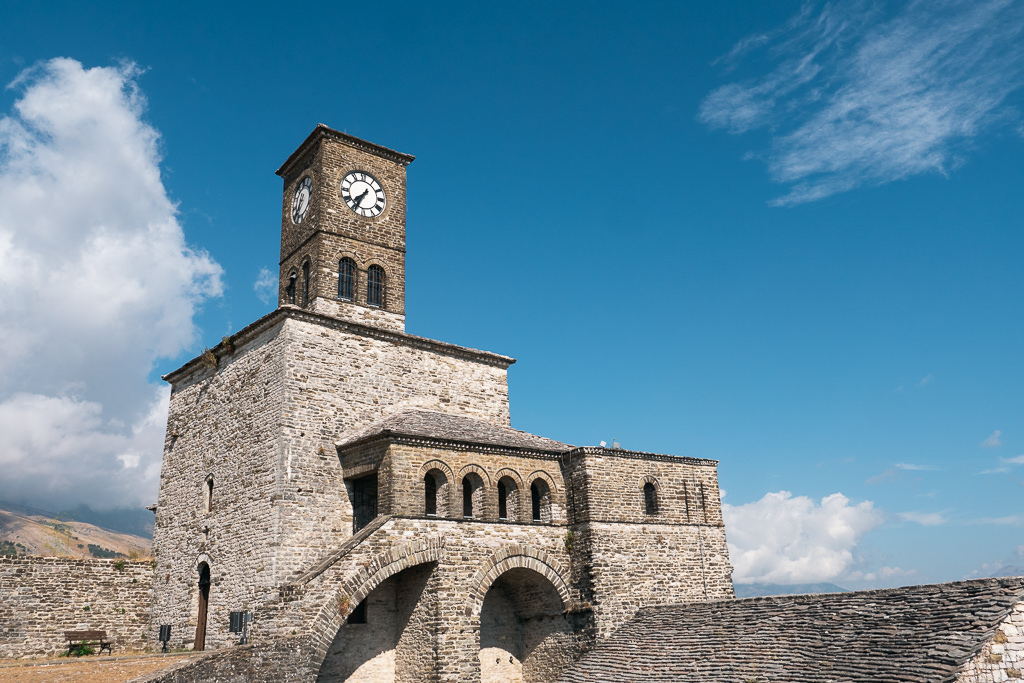
This is one site you absolutely cannot miss during your stay. Not only will you be able to travel back in time as you wander the grounds, spotting the clock tower, the church, and the arched walkways, but you’ll also find the most rewarding views of Gjirokaster from here.
If you’re visiting in summer, I’d recommend exploring it early in the day, to avoid working up a serious sweat under the Albanian sunshine. This Gjirokaster Castle tour also has Blue Eye, which I will talk about later, as one of its stops. This other tour is also an option if you’re coming from Tirana.
2. Brush Up on Your History at the Castle’s Museums
Gjirokaster Museum
- Opening hours: Every day, 9:00 AM – 7:00 PM
- Admission fee: 200 Lekë
- Location: Google Maps
Arms Museum
- Opening hours: Every day, 9:00 AM – 7:00 PM
- Admission fee: 200 Lekë
- Location: Google Maps
Gjirokaster Castle is also home to some museums, each of which you can enter for a small additional fee, including the Gjirokaster Museum and the Arms Museum.
The Gjirokaster Museum is the best place to learn about the history of this long-standing castle and the city itself. Having been conquered multiple times, this museum brings Gjirokaster’s turbulent past to life, from photos depicting life during Communist times to artifacts from the Ottoman Empire.
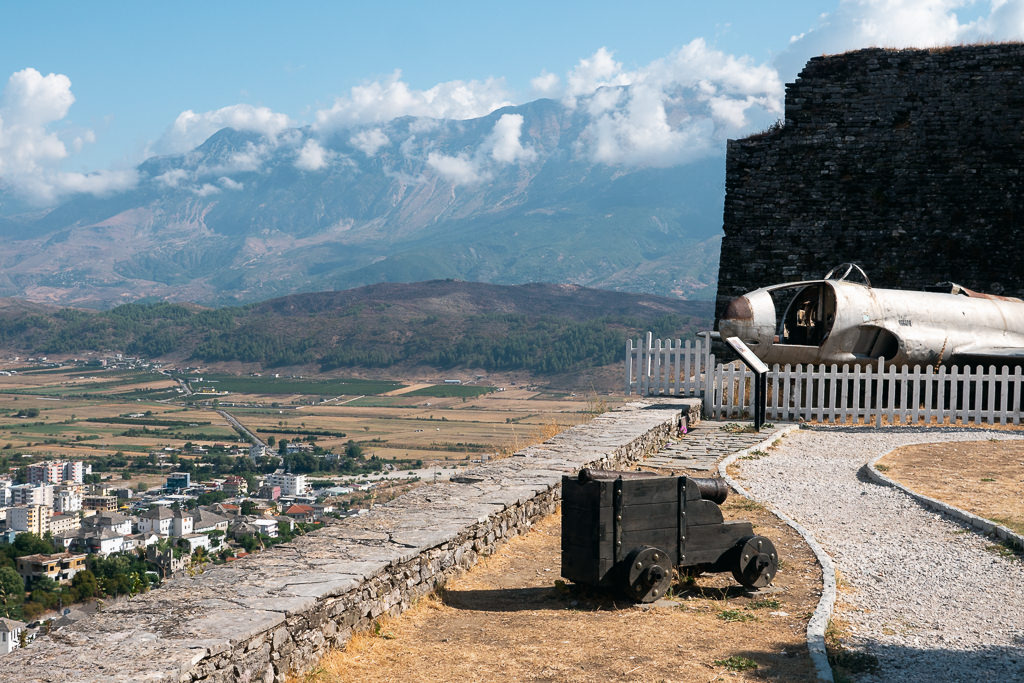
Anyone interested in weaponry should stop by the Arms Museum. It’s not as informative as the Gjirokaster Museum, but you’ll find the likes of World War II machinery and centuries-old guns inside.
Perhaps the coolest addition to the Arms Museum is an old plane belonging to the U.S. Air Force, which some believe was taken down during the Cold War.
3. Explore the Old Town
My absolute favorite thing to do in Gjirokaster is to simply stroll around the Old Town, which has been declared a UNESCO World Heritage Site. Everywhere you look, you’ll be greeted by stunning examples of white Ottoman architecture, cobblestone streets, and hilly walkways.
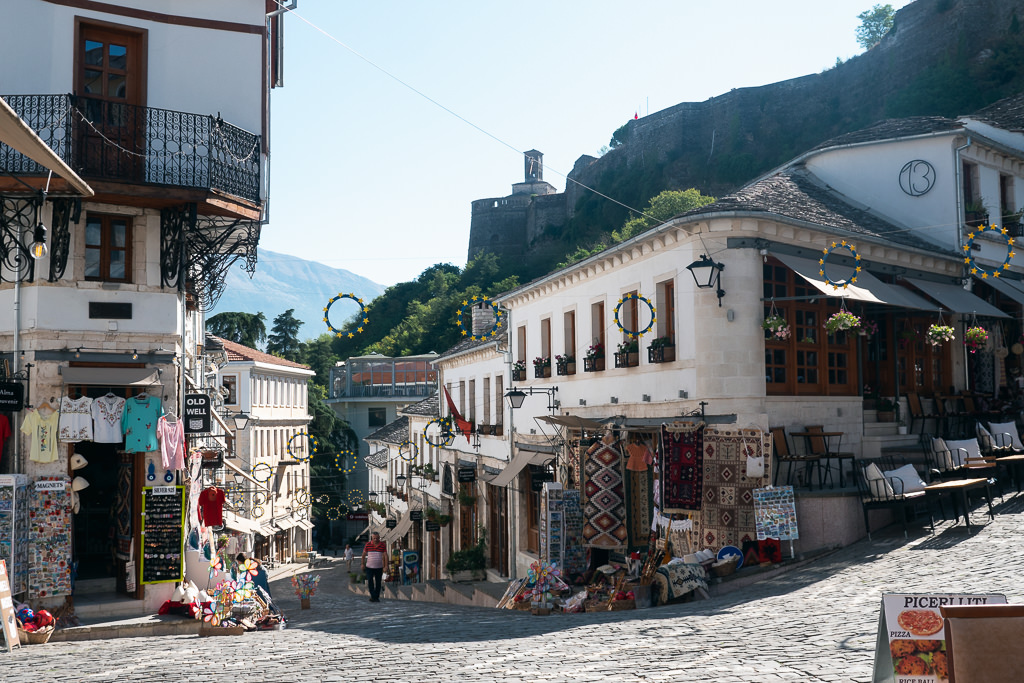
You’ll have your pick of cute cafes, and restaurants dotted along the streets, which are the perfect places to grab a bite to eat and watch the world go by. This part of town is even more gorgeous when the sun starts to go down, as fairy lights make each street even more magical.
4. Step Inside the Impressive Skenduli House
- Opening hours: Every day, 9:00 AM – 7:00 PM
- Admission fee: 300 Lekë
- Location: Google Maps
Perhaps the best place to admire the local architecture is at the Skenduli House, an authentic Gjirokaster home that’s been in the same family for generations.
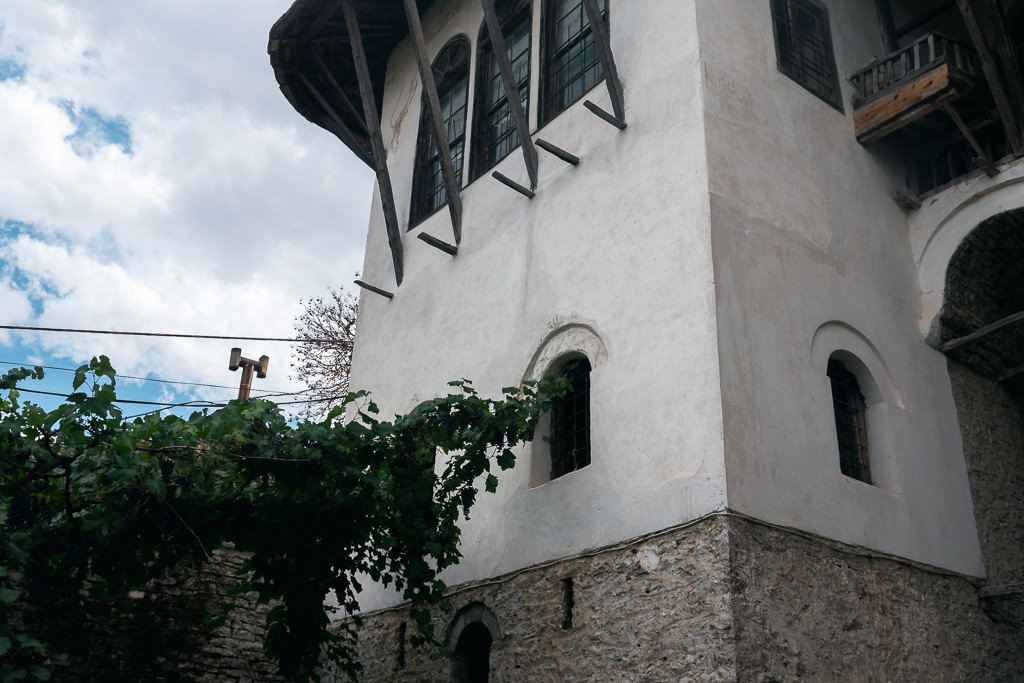
Despite being once occupied and used as a museum during the Communist era, Skenduli House is today operated by a descendant of its original owners, who you’ll more than likely be guided by when you visit.
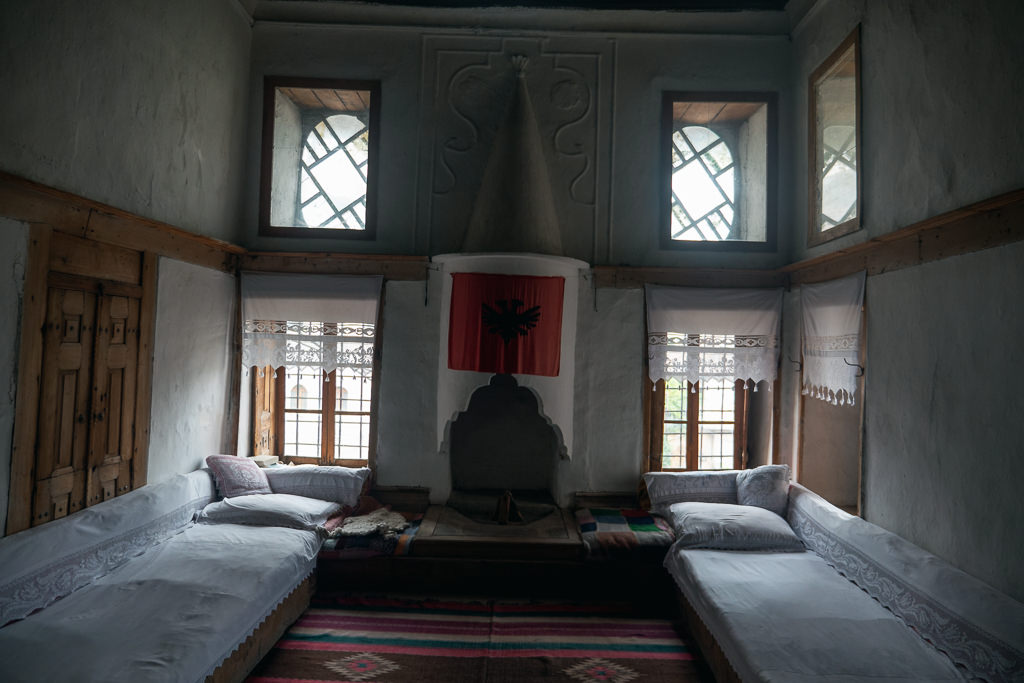
During the tour, you’ll be given an insight into life in Gjirokaster during the 1700s as you explore bedrooms, living spaces, and a bunker, but the premier room, complete with a fireplace and frescoes, is the highlight for me.
5. Cook Up a Storm at a Culinary Class
If you fancy trying something a little different, throw your apron on and learn some recipes that you can show off to your loved ones back home on your return!
Albania has some seriously tasty food, but Gjirokaster also has some of its own specialties, such as qifqi, shapkat, and japrak.
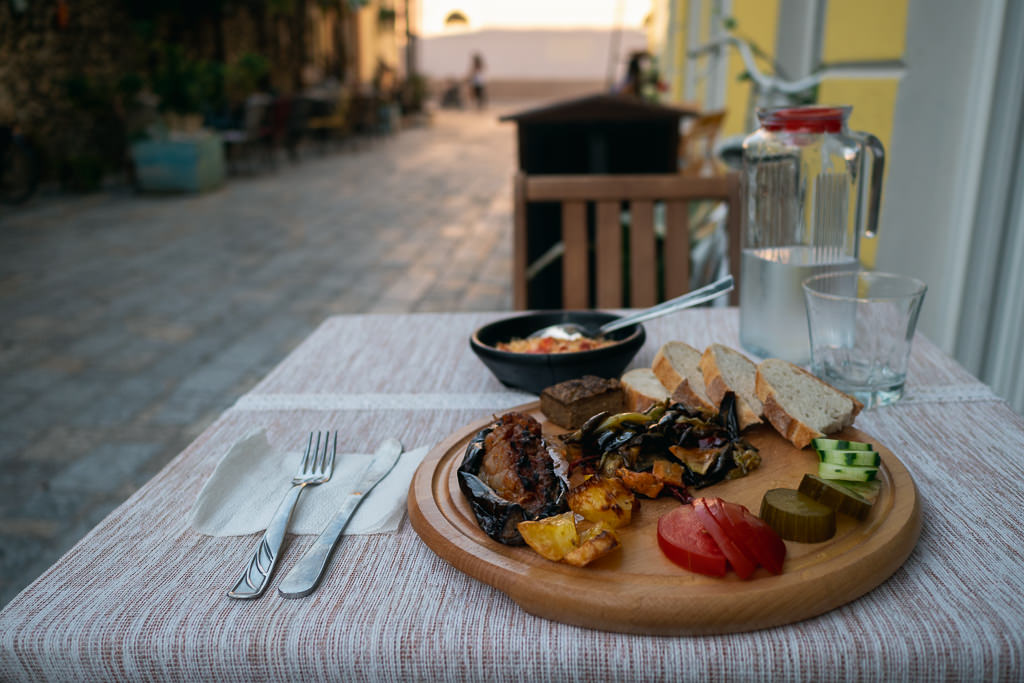
Cooking classes are always so much fun, even if you’re a complete novice and don’t rate your culinary skills very highly.
To whip up some Gjirokaster favorites, check out this local-focused class. However, this vegetarian class is an excellent alternative if you prefer to go meat-free, and it even includes some complimentary raki. For those of you who have yet to try raki, this is Albania’s homemade, typically very strong, spirit of choice.
6. Experience the Eerie Cold War Tunnel
- Opening hours: Every day, 9:00 AM – 6:00 PM
- Admission fee: 200 Lekë
- Location: Google Maps
When Gjirokaster native Enver Hoxha became increasingly paranoid about foreign invasion during the 1970s, he began building countless bunkers throughout Albania, including the Cold War Tunnel.
This 59-room pit was built to shelter the likes of government officials and elite members of society from potential nuclear attacks. It remains very much in its original state today, minus some stolen furniture.
Tours run every hour and last for around 30 minutes, during which your guide will give you some background information and an explanation of various rooms in the bunker.
If I can give you one piece of advice, it’s to bring a jacket or cover-up of some sort, as it’s pretty chilly in here even when it’s a blistering 95°F outside.
7. Do Some Shopping at the Gjirokaster Bazaar
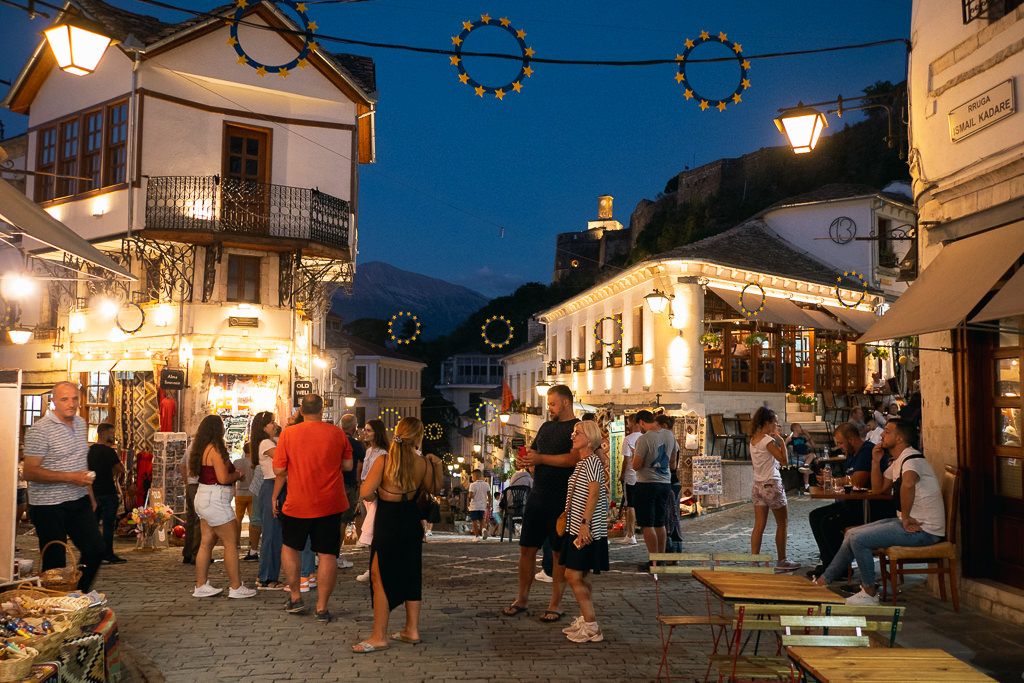
Within the Old Town lies the Gjirokaster Bazaar. Now, just to set expectations, this is not some large roofed shopping space as you might imagine from bazaars in Turkey or Morocco. This is really just two streets lined with small shops, though they are in the exact historic location where merchants gathered since ancient times.
Having once stood as a traditional marketplace for locals for hundreds of years, today, the winding streets of the bazaar mostly cater to tourists.
This is where you’ll want to stock up on souvenirs, as there are heaps of stores selling unique trinkets and colorful keepsakes, from patterned carpets and handmade jewelry to ceramics and artworks.
When you’ve had enough retail therapy, head to one of the ice cream parlors or bakeries and pick up a sweet or savory treat.
8. Step Inside the Bazaar Mosque
- Opening hours: Weekdays, 9:00 AM – 4:30 PM
- Admission fee: Free
- Location: Google Maps
When Gjirokaster was under Ottoman rule, the city boasted fifteen mosques, most of which existed up until Albania became a communist state. All these places of worship were destroyed during this time, aside from the Bazaar Mosque.
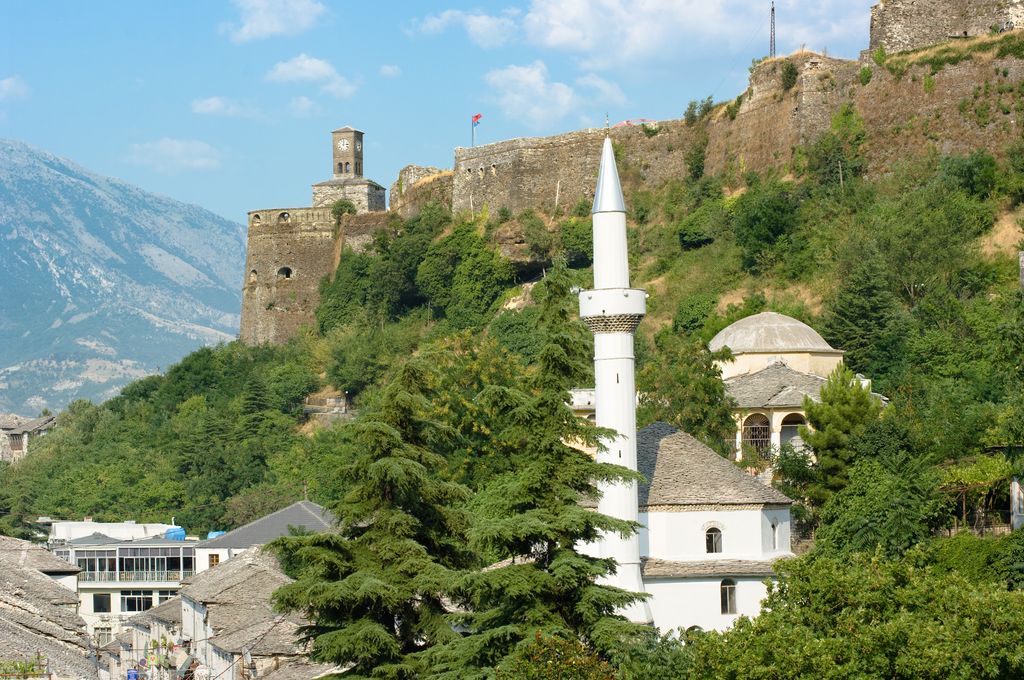
Unless you practice Islam, you can’t enter during prayer times, but you’ll often find people worshipping at any time of the day, and you might even encounter the imam during your visit.
At present, the mosque is free for all to enter, though it’s important to remember to dress conservatively and ensure your shoulders and knees are covered when you arrive.
9. Hike to the Ali Pasha Bridge
Despite being a less visited spot than some of the other places on this list, trekking up to the Ali Pasha Bridge is among the top things I’ve done in Gjirokaster.
This stone bridge is the only remnant of the 19th-century aqueduct that brought fresh water into the city and is one of the most remarkable sites outside of the Old Town.
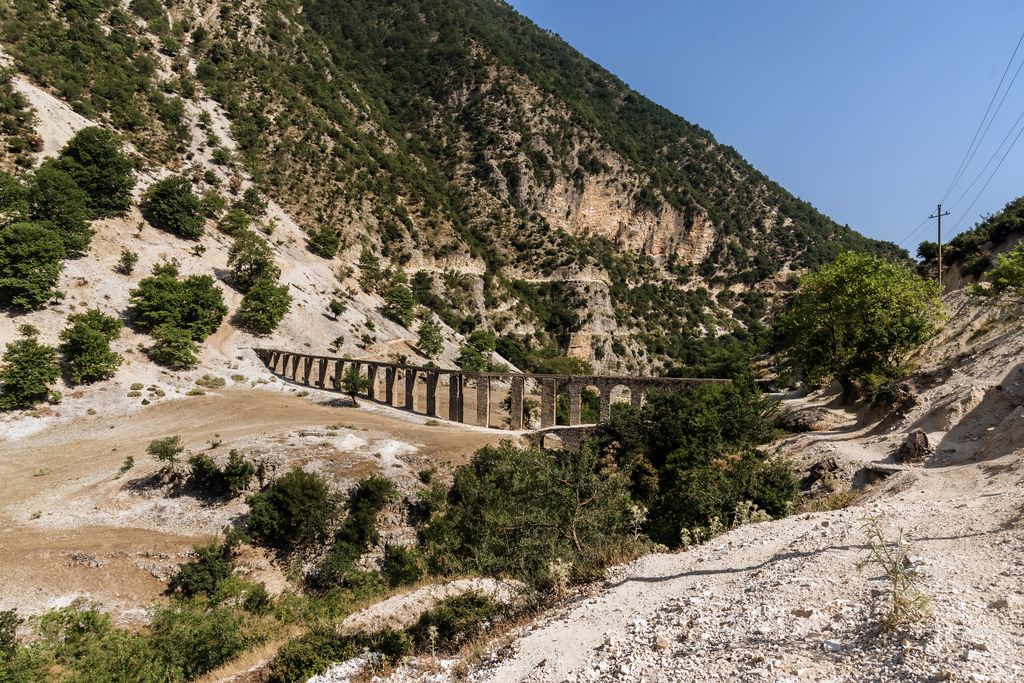
You’ll have to tackle a short but arduous hike to reach the bridge, with some rocky and steep patches along the way, though it should only take you around 30-40 minutes to complete.
Anyone with a fear of heights should be warned that the path across the bridge is free of fencing, which can be pretty unnerving.
Head off early in the day if you’re making the trek during the summer, as there’s very little shade for most of the trail.
10. Admire the Vivid Blue Eye
Located around an hour’s drive from the Old Town of Gjiokaster is a natural spring with crystal clear blue waters that need to be seen to be believed! Aptly called the Blue Eye, this natural phenomenon is truly magical and has become one of Albania’s most beloved attractions.
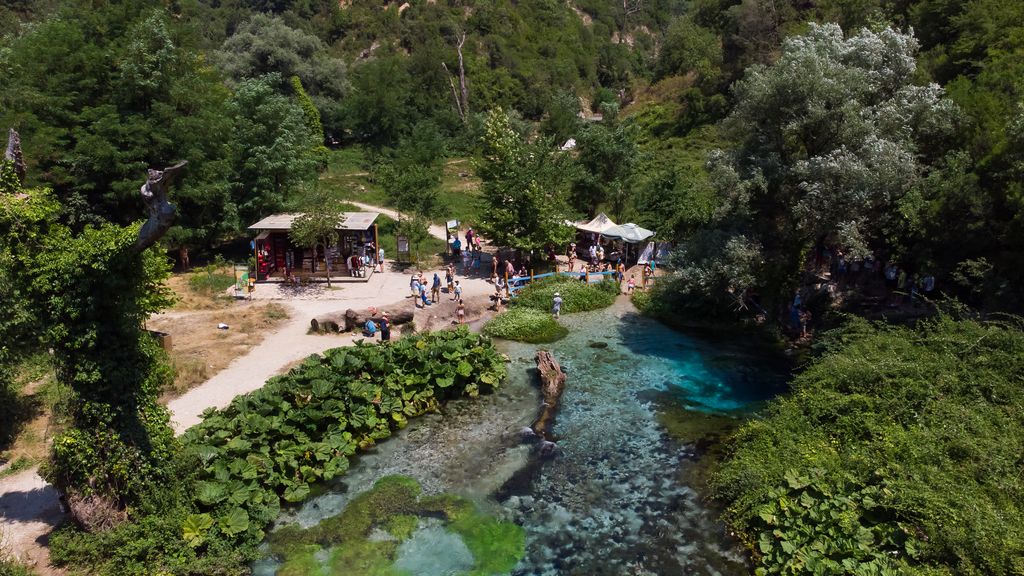
Though several Albanian legends tell the story of how this site came to be, the water comes from an unwater cave, which forms the pupil of the ‘eye.’
What’s fascinating about the Blue Eye is that divers have made it to 50 meters below the surface of the spring, but it remains unknown just how deep the water goes.
To protect the clarity of the water, swimming is not allowed here, but unfortunately, many people continue to disregard the rules, and it’s not uncommon to see people bathing or jumping in.
Some links may be affiliate links, meaning I may earn commission from products or services I recommend. For more, see site policies.
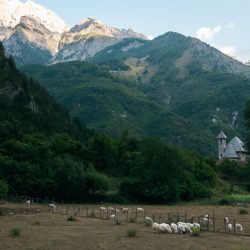
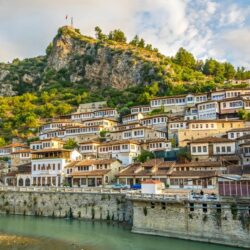




0 comments
Leave a comment
Your email address will not be published. Comments are manually moderated.